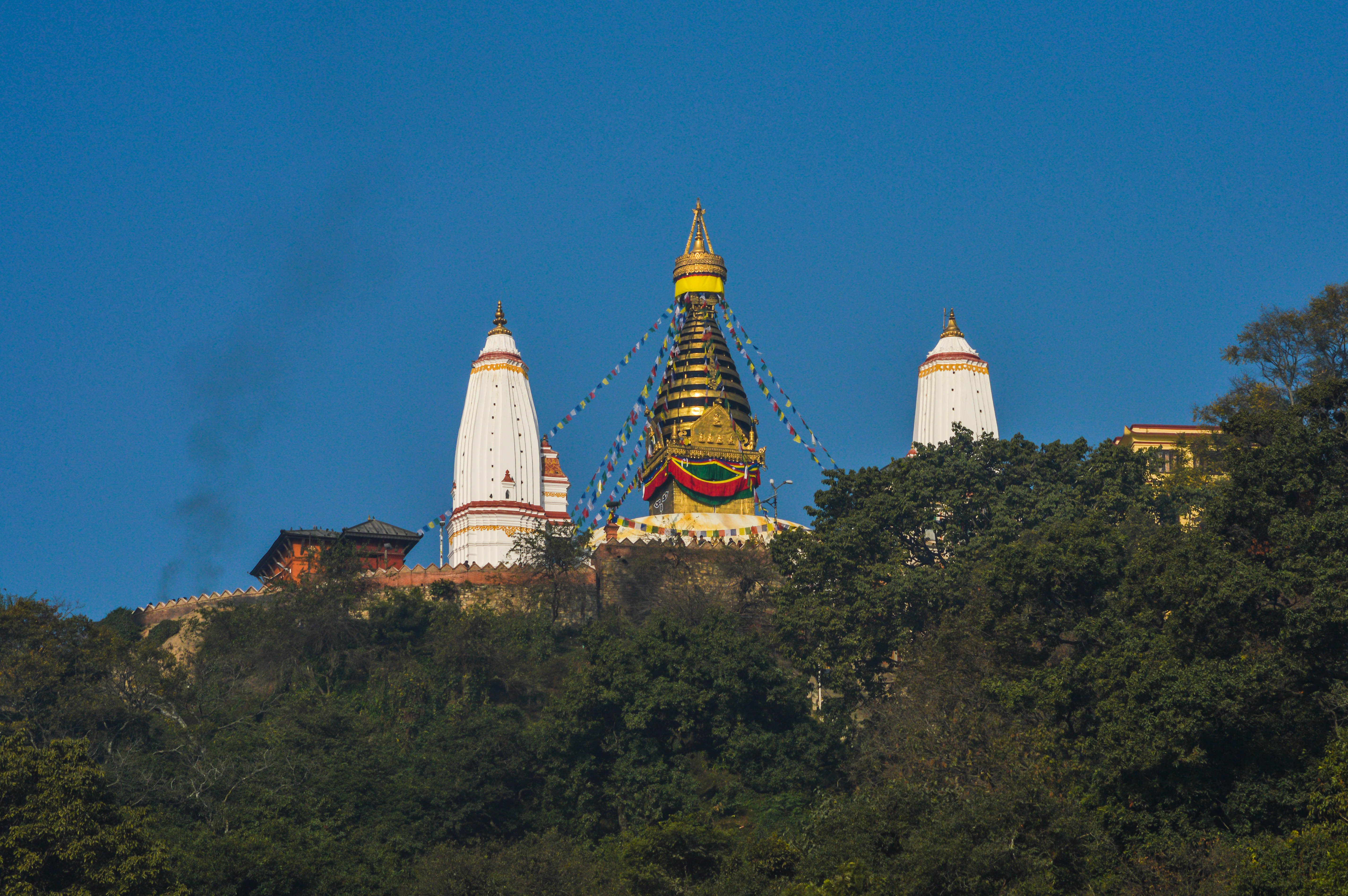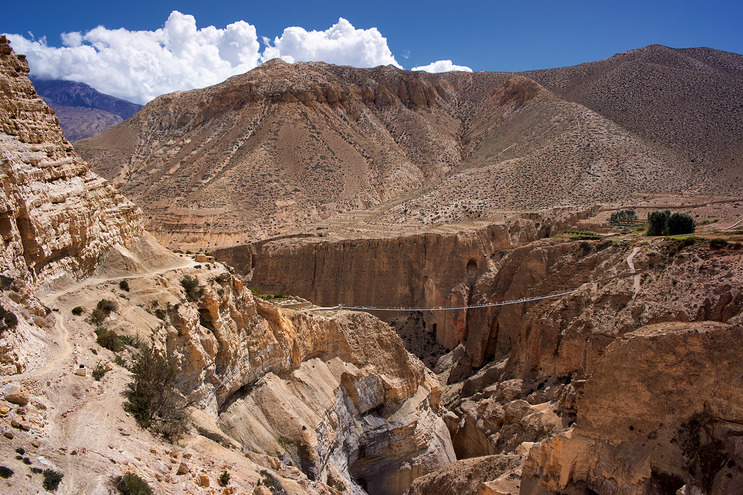Ghar Gumba or Lo Gekar Monastery of Upper mustang is one of the oldest monastery of the world which was built in 8th century by Guru Rimpoche or Padmasambhaba. The monastery is totally rooted in Tibetan Buddhist traditions and considered one of the significant spiritual sites of Mustang region.
This nine-storied monastery was built over the heart of a legendary monster, symbolizing deep spiritual symbolism. Its ancient architecture and historical importance make it is a respected site for Buddhist pilgrims.
Lo Gekar reflects the monastery's spiritual importance and its connection with purity and virtue. "Lo" refers to the region of Lo, which is the ancient name of Mustang region. "Gekar" represents pure virtue.
The Lo Gekar or Ghar Gumba Monastery’s interior sounds incredible. The combination of holy books, manuscripts, murals, and statues creates a deeply spiritual atmosphere. The large statue of Guru Rinpoche (Padmasambhava) inside the cave adds a significant touch of reverence and connection to the Tantric traditions.
History and Mythology of Ghar Gumba
Guru Rinpoche, also known as Padmasambhava, is a revered figure in Tibetan Buddhism, credited with bringing Buddhism to Tibet in the 8th century. Before reaching Tibet, he is believed to have meditated for three years, three months, three weeks, three days, and three hours in the caves of Pharping, Kathmandu. This period of intense meditation is said to have led to his enlightenment.
After achieving enlightenment in Pharping, Guru Rinpoche is believed to have traveled to Tibet, entering the region through the Mustang area. His journey through Mustang holds significant spiritual importance, as he is credited with calming local spirits and establishing the foundations of Tibetan Buddhism.
Guru Rimpoche was invited by Tibetan king Trisong Detsen in Tibet to promote Buddhism in Tibet and to establish significant Samye Monastery because a monster, Lo Singmo Gengyal destroyed the construction all the time. The monster ran away to Mustang When Guru Rimpoche reached in Tibet. By dropping salt along on the way to different places of Mustang the monster went his way to his destination such as in Chhora Sumda and Kobang village of Lower Mustang.
The Tiji Festival in Mustang sounds like a vibrant and meaningful celebration at the Lo Ghekar Monastery. The Cham dances and the depiction of ancient Buddhist legends must make it a visually and spiritually captivating experience for everyone involved. It’s a wonderful way to immerse in the cultural and religious traditions of the region.
Guru Rimpoche and Monster Conflict in Details
According to local tradition, Guru Rimpoche embarked on a journey through Mustang, leaving behind sacred marks, footprints, and sites when he was running to find a monster. Because Monster caused suffering among the local people, disrupting their lives and spreading fear. The monster is often described as a powerful and dark force, representing ignorance and negative karma. The battle between enlightened master and the dark force was intense, symbolizing the struggle between wisdom and ignorance, good and evil.
In the region between Jomsom and Kagbeni, known as Uche, it is said that Guru Rimpoche was in pursuit of a monstrous entity causing harm to the local people. During his journey, he grew tired and took a rest, leaving a visible mark on the stone where he sat. This mark is still respected by pilgrims and locals who pass through the area.
As he continued his journey, Guru Rimpoche visited several significant places in Mustang, including Chaile, Nyi La, and Ghami. At Nyi La, after a particularly exhausting walk, he took a sleep. Upon waking, he felt thirsty and, using his incredible powers, he is believed to have extracted water from the top of a hill. The spot where this occurred is marked by his footprint, can be seen now also.
In the end, Guru Rimpoche emerged victorious in Ghami vilalge. The monster, unable to fight against the power of the vajra and due to the enlightened mind of Guru Rimpoche, monster was defeated. However, rather than being completely destroyed, the monster's body was transformed into various sacred sites scattered throughout Mustang. These sites are believed to hold the energy and essence of the battle, serving as reminders of Guru Rimpoche's victory over evil.
After the defeat of the monster, peace was restored to Mustang. The sacred sites created from the monster's body parts became places of pilgrimage and worship.
Mandaringma: A long prayer wheel wall formed from the monster’s entrails. A chortens was built over his bones and other parts of the body.
Dhakmar Red Hill: The hill's red color comes from the monster's lungs and blood. Still now we can see Dhakmar Hill is completely red.
Lo Ghekar Monastery or Ghar Gumba: Built over the monster’s heart, this nine-storied monastery is considered the oldest not only in Nepal and Tibet but also in the world.
How to Reach Lo Gekar or Ghar Gumba from Pokhara?
Traveling to Ghar Gumba sounds quite flexible! Whether you have option for a trek from Jomsom or a Jeep drive, you’ll be able to enjoy the journey in your own preferred way. The flight from Pokhara to Jomsom in the morning must offer some breathtaking views of Annapurna and Dhaurlaigir region.
Using a Jeep drive from Jomsom is definitely a practical choice given the condition of the trekking routes because most of trekking routes are demolished by Jeep road. It’s great that you can still enjoy the area with small hikes to explore the monastery and nearby caves such as Chungsi Cave, Jhong Cave,
While visiting Ghar Gumba, you will also have the opportunity to Lo Manthang Tour, the ancient kingdom of Nepal. Additionally, you can explore popular Buddhist monasteries, shrines, caves, and historic sites like the old king palace and ancient walled village of Lo Manthang.
During the Tiji Festival at Ghar Gumba, the monks engage in reading holy books and conduct special prayers and blessings. The festival is marked by masked dances performed by the monks, with the community and visitors actively participating. They bring offerings such as food, lamps, and money to the monastery, enhancing the spiritual atmosphere of the event.
Conclusion : Ghar Gumba- Tiji Festival and Guru Rimpoche
Ghar Gumba is renowned for its spiritual significance, where visitors seek positive energy, peace, prosperity, wisdom, and personal enlightenment. Its ancient history and serene atmosphere make it a special place for those on a spiritual journey.
Ghar Gumba's atmosphere is indeed enriched by the presence of monks in prayer, Buddhist flags, ancient holy books, art and paintings on the walls, and the statue of Guru Rinpoche. These elements contribute to its deeply historic and primitive feel, adding to its spiritual significance.
As we journey together, may this visit to Ghar Gumba be a source of inspiration, peace, and enlightenment for you. Let's explore Ghar Gumab of Mustang region.



